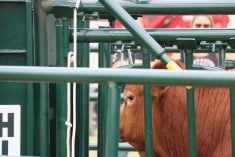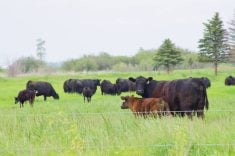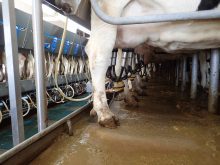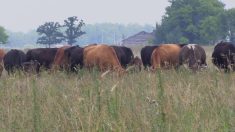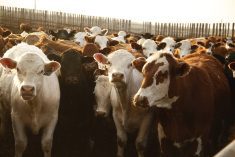The cattle market has rebounded significantly in recent months to the point where a large, mature bull could bring upwards of $2,000.
This will no doubt increase the calls veterinarians will get to look at sick calves, as well as dealing with production losses from decreased weight gains or lack of cows getting pregnant, which also can generate huge returns if corrected. Of course, veterinarians have always provided these services, but poor returns to producers in recent years has resulted in our services being underutilized.
This article will review better ways to utilize your veterinarian and hopefully maximize your returns.
Read Also
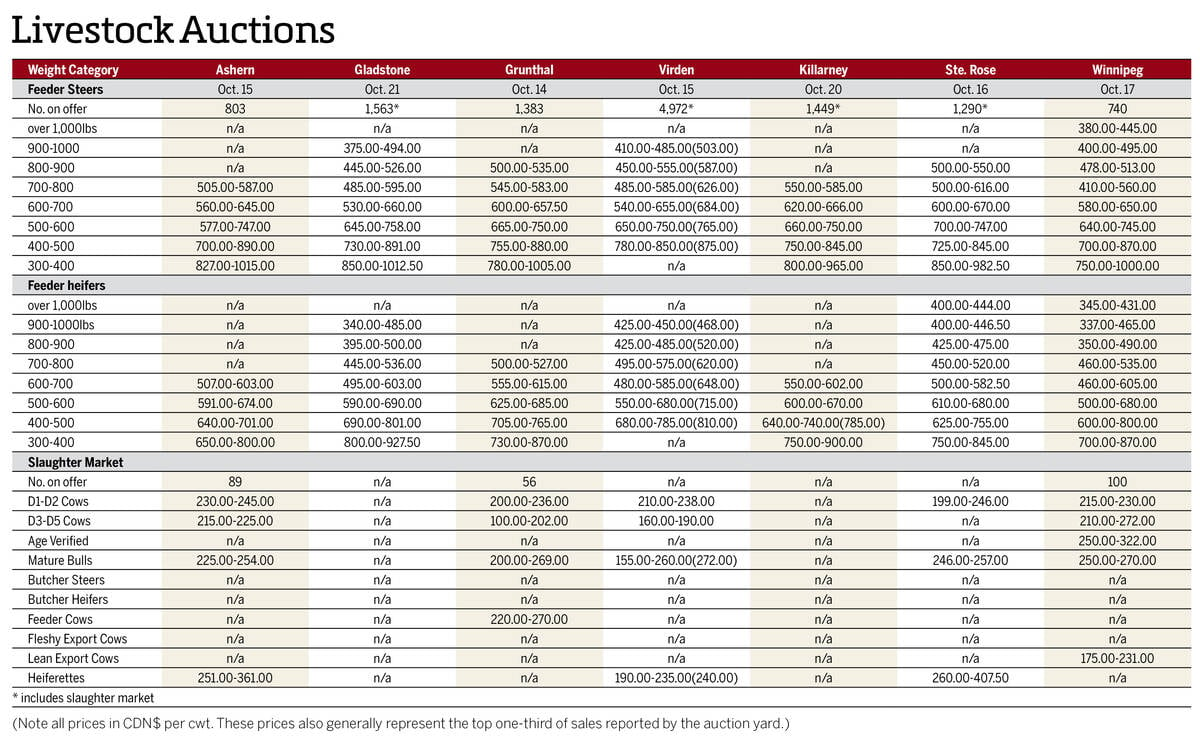
Manitoba cattle prices, Oct. 22
Local cattle sale prices from Manitoba’s seven livestock auctions for the week of Oct. 14-21, 2025.
First, it’s imperative that animals be examined before treatment. If an ailment cannot be treated or the prognosis is poor, the best solution may be to ship the animal. If antibiotics or other drugs requiring a withdrawal period have been used, then you must wait before shipping.
You need a good working relationship with your local butcher or abattoir. In cases of a broken leg or downer animal from injury, emergency slaughter can often allow salvage of a fair amount of the value in meat. Again, it is good to get these checked out first, as a downer from an injury versus a downer animal from a dead fetus inside or a bad mastitis will have two totally different outcomes.
There has been a lot of skimping on management procedures since BSE even though a decade has passed. Some producers stopped pregnancy checking, others elected not to semen evaluate their bulls, and still others stopped vaccinating completely or reduced it significantly.
It’s time to re-examine these management strategies. By pregnancy checking, open cows are sent out earlier, and you save feed and the labour of observing cows for calving when they are not pregnant. All the open cows can be marketed at the same time or grouped with neighbours’ open cows for load lot marketing. Semen checking bulls eliminates the poor fertility ones so they, too, can be shipped. You may even be able to increase the cow-to-bull ratio if you know all of your bulls are fertile.
You should also go with the vaccination program your veterinarian suggests. They best know your geographical region and the type of operation you run. Their goal is to employ the best combinations of vaccines to help increase your farm’s biosecurity, and they won’t recommend vaccines that don’t have an economic impact on your farm.
By palpating your heifer replacements before breeding freemartins, small-pelvised, reproductively immature and bred heifers can be identified and culled. At the same time, give the shots for IBR and BVD, which ward off against the infectious reproductive diseases. This could improve your conception rate.
When the economic returns dwindled, so did our enthusiasm for doing procedures that improve margins but also take a bit of work. Implanting strategies and treating parasites are definitely worth doing to boost the bottom line. Remember to set up implant strategies that best utilize your type of feed and the length of time you own the calves. Whether you sell on the rail or by the pound may also influence the type of implant you use. There are many different implants out there with varying lengths of duration and strength. Work with your vet to devise the best implant strategy.
Veterinarians also learn a lot from a timely post-mortem. This is especially true if we identify a preventable disease or one (such as coccidiosis) where preventive treatment strategies can be devised. If an unexplained death occurs, take it in for an autopsy. By looking at the internal organs, response to treatment can be evaluated. As well, the cause of death can be positively identified in the majority of cases.
Many other procedures — such as foot care, udder care, monitoring for early signs of cancer eye, examining lumps and bumps, or treating wooden tongue or lumpy jaw — will not only increase the longevity of the cattle but, in many cases, enhance their value when marketed.
Many more invasive procedures — such as cancerous eye removal and claw amputations for septic arthritis — can restore value and eliminate a potential animal welfare scenario. Many times these cows can stay in the herd for several more years.
Health is always changing and veterinarians are abreast of the new, emerging diseases as well as topics such as animal welfare, beef quality assurance, antimicrobial or parasite resistance, genetics, traceability and performance-enhancing technologies that affect gain.
Think of all these things the next time you are hesitant to call your veterinarian. They have always been on your side and should help you enhance survivability of cattle under your care, improve the reproductive rate in the herd and weight gain in your calves, and take other steps to improve your profitability.



